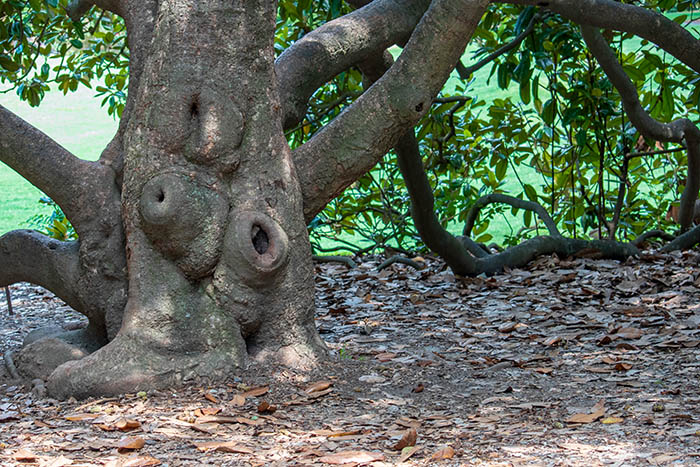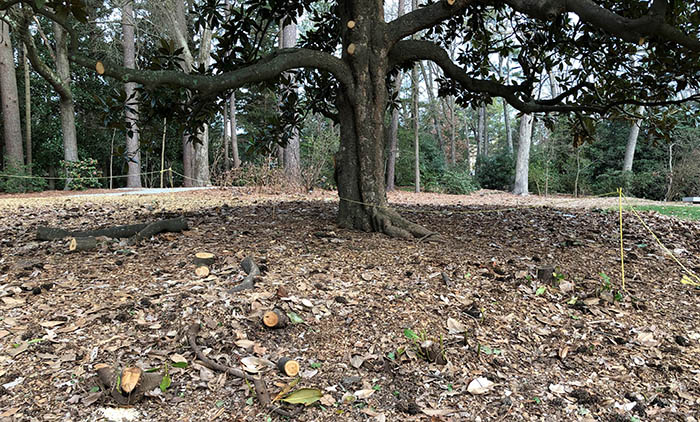Garden Talk
Horticultural Highlight: Pruning + Tree Removal

In this series, the staff of Duke Gardens highlights plants you’ll find within our 55-acre living collection. This week horticulture director Bobby Mottern explains some recent magnolia pruning and tree removals.
Botanical name: Magnolia grandiflora
Common name: Southern magnolia
Family name: Magnoliaceae (Magnolia Family)
Plant type: Tree
Native range: Southeastern United States
Location within Duke Gardens: Historic Gardens surrounding the South Lawn
USDA Hardiness Zones: 6-10
The southern magnolias on the South Lawn have served as beloved foundational features of that space for decades. Three of those trees recently received a heavy pruning. This pruning will improve the health of the original trees by removing the suckering growth from rooted branches.
In landscape settings southern magnolias traditionally have their branches sweep to the ground, creating a large pyramidal shape. Not only is this a classic aesthetic but it also has a hidden benefit. Southern magnolias constantly shed leaves, and when the branches are allowed to grow to the ground they act as a wind screening apron, containing those fallen leaves beneath the tree so they don't get blown around. But if branches are allowed to come in contact with the soil long enough, they can root and essentially create another tree.
For many years now, these magnolias had rooted branches, resulting in a tree colony that altered the form of the original tree. Not only were the rooted branches distorting the tree form, they were also taking up nutrients and energy from the original tree.
For these reasons, we elected to complete a structural renovation of three magnolias. One was more challenging than the other two, requiring a more aggressive level of pruning. In the years to come, the higher branches that remain will be trained toward the ground. But we will ensure that they remain just above the soil to maintain both that classic magnolia shape and the health of the trees.
Tree removal update, March 22: Recently we had to remove two notable trees from Duke Gardens, a magnolia on the South Lawn and a red cedar on the Hanes lawn. Trees are removed in the garden for a variety of reasons. Some become potentially hazardous, having been damaged by storms (wind, snow, ice, lightning etc). Some get weakened by disease and/or insect damage. They may also endure physical damage that creates a decline in health and stability.
We always evaluate the condition and merits of every tree before deciding to remove it. These two trees were both in a state of decline and thus had to be removed.


Photos by Jason Holmes (top), Cathi Bodine (middle) and Beth Hall (bottom).





